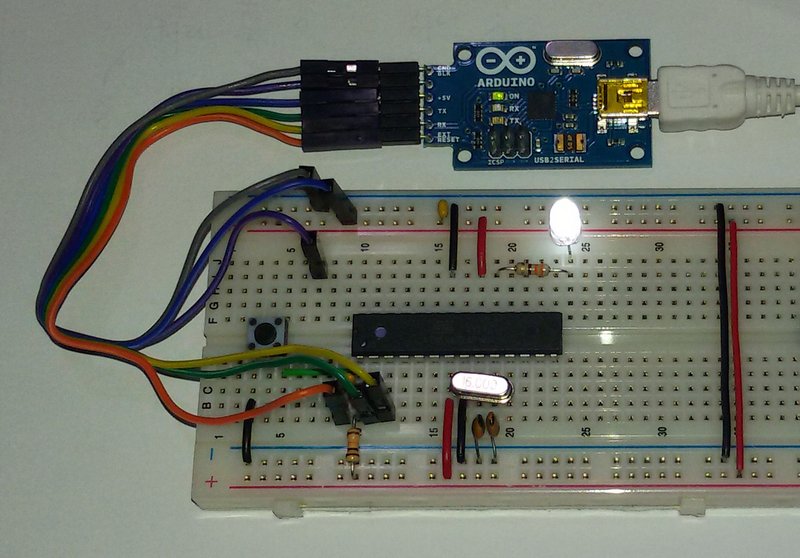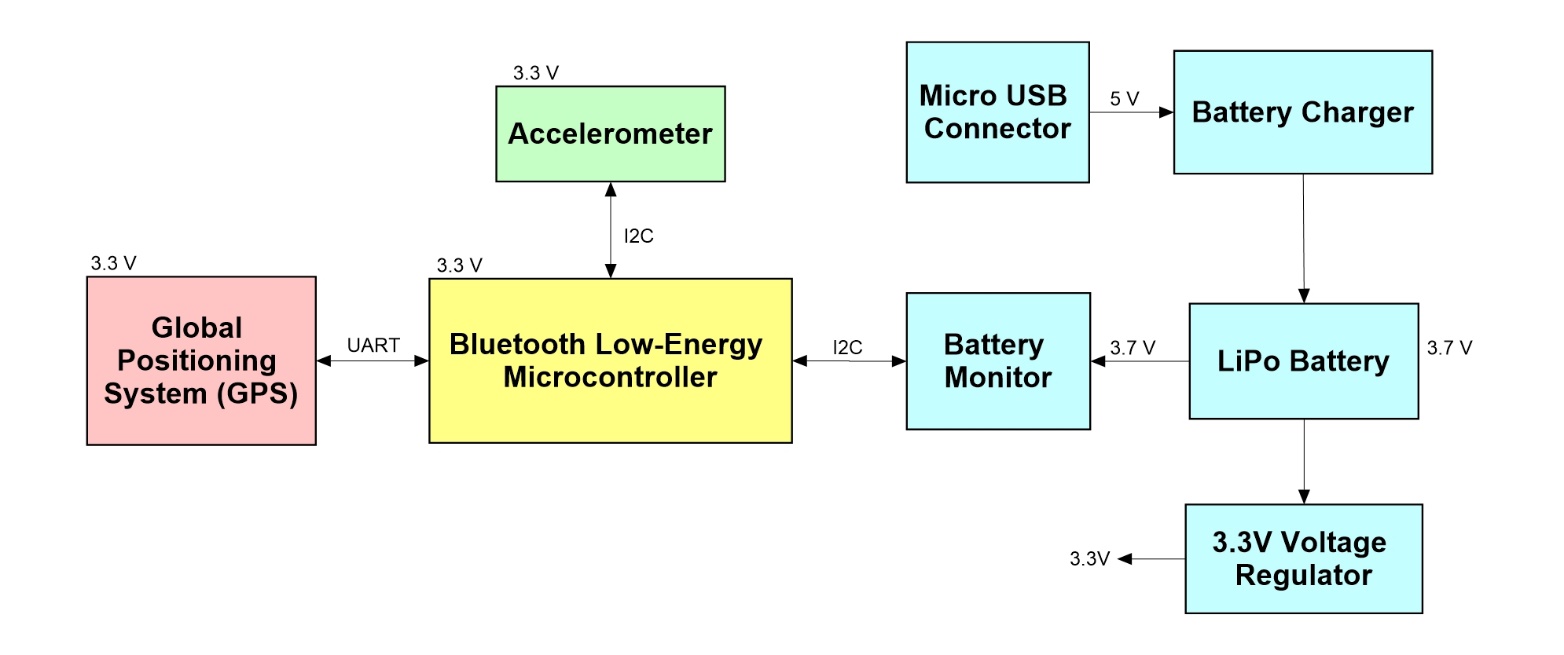Taking A Product To Market
When it comes to bringing a new product to market, there are many wrong ways to do it. Unfortunately, the majority of entrepreneurs, startups, and inventors go about it the wrong way.

There is always a right way and wrong way to do something. The wrong way is usually based on an over focus on the product idea and on development. Wait a minute! Did a product development engineer just say it's wrong to over focus on development? Well, yes, I did.
Sure, the idea itself and the product development are both important, but most entrepreneurs focus all of their efforts on these two aspects. Personally, I think this is because the development of your product idea is the most fun, and least scary, part for many people.
Sales and marketing usually get ignored. Just remember, without an emphasis on sales and marketing you're an inventor or a maker, not a real business. Nothing happens in business without sales and marketing.
The right way to take a product idea to market is the strategy followed by large companies that develop products on a regular basis. It's a really good idea to model your development process after these large companies because they've spent a lot of time and money determining what process works best.
Let's take a closer look at the right way to bring your product to market.
Market research
When considering a new product idea your first step should always be market research.
Most people begin with some type of development or a patent, but that's the wrong way to start. You need to do significant market research as your first step.
Many entrepreneurs come up with a product idea, and feel very confident that it's the best solution and that everyone will want it. It's easy to make the wrong decisions when you're don't seek outside feedback.
With hardware products it's really challenging to do early market research because you don't have a product yet. You're obviously going to be limited in the type of market research you can conduct.
The best market research entails putting the product out in the market and seeing how well it sells, but that's not possible at the beginning.

Figure 1 – Market research should always be your first step when launching a new product.
You're going to have to research other products that are similar to your own. You need to talk with retailers that carry similar products. Consider conducting surveys to get feedback from potential customers.
Don't be secretive with your idea, and always gather feedback from either people in that industry or people that would be potential end users for your product.
Finally, remember that market research isn't something you just do at the beginning. Market research should be an ongoing process for you.
As you progress with your product you will be in a position to gather better market feedback. For example, market research becomes easier and more accurate once you have production-quality samples to share.
Proof-of-Concept prototype
A proof-of-concept (POC) prototype is built using a development kit and off-the-shelf components. Its sole purpose is to prove the product concept.
A POC prototype will in most regards be nothing like your final production product. It will use completely different components than your final production version of the product, and it will look a lot different too (in most cases a POC prototype will be rather ugly).
Most POC prototypes are based on either an Arduino or Raspberry Pi development kit. Those are great for initial testing of your product concept, but rarely are they viable solutions to bring to market embedded inside your product.

Figure 2 – A proof-of-concept prototype makes sense for some products and for some founders, but not all.
Not all products require a POC prototype. In fact many professional product developers consider a POC prototype a waste of time. This is because most big tech companies completely skip the POC prototype.
They do this because for many products a POC prototype provides very little additional value. Yet, it adds considerable time to market. If you don't have fundamental questions about whether your product idea will solve the intended problem then there is really no point to creating a POC prototype.
Established companies with large budgets prefer to instead focus on a production-quality prototype because they know that is usually the fastest route to market.
If you're a maker who enjoys working with electronics, and you have fundamental questions about your product concept, then creating a proof-of-concept prototype may be a smart decision. Otherwise, you should likely skip this step and focus on the market ready version of your product.
Preliminary design
How much money do you need to raise? Is the product feasible to manufacture? How much will your product cost to manufacture? What should the retail price be for your product?
These questions and others can be answered using a preliminary design. A preliminary design should answer many of your biggest questions.

Figure 3 – A preliminary design focuses on answering the big questions while ignoring the small details.
The preliminary design includes selecting all the critical components, estimating the size and the cost of the printed circuit board(s), estimating the size and cost for the enclosure, and determining the cost to assemble and test the product.
Once you have a preliminary design you can estimate how much funding is required for your product. You don't necessarily have to have a preliminary design to estimate the funding required.
But, you will gain a much better understanding of all the pieces that go into your product by creating a preliminary design. This allows you to more accurately estimate how much funding will be required.
The amount of funding that you're going to require consists of the development cost, the scaling cost, and the inventory costs.
In order to estimate the inventory cost you need to know how much the product itself is going to cost per unit to manufacture.
Production cost and sales price analysis
Next you want to perform a production cost and sales price analysis. This step absolutely requires that you start with the preliminary design.
NOTE: Be sure to download your free PDF guide 15 Steps to Develop Your New Electronic Hardware Product.
The preliminary design allows you to review the manufacturing feasibility of the product, and to estimate early on how much the product will cost to manufacture, assemble and ship to your warehouse.
You need to know that cost as early as possible so you can calculate what your profit margins are going to be. This in turn allows you to determine what type of sales price to target.
The majority of people developing products think about production cost and profit margins after they've completely developed their product. That's not the way to do it. You need all this information as early as possible so you can make the right decisions.
Here's an example – you may find that one particular feature of your product doubles the cost. Through market research you realize that this isn't a feature that people absolutely must have.
By understanding how much each feature adds to the cost of the unit, you will be able to make design decisions from a much more informed viewpoint.
Create a plan
Once you have all these costs estimated, you have your preliminary design, and you have market research, the next step is to create a plan.
If you're not seeking outside investment from professionals, then you don't need a formal plan. But you do need at least an informal plan on how you're going to get past each of the obstacles that lie ahead.
You cannot take the ostrich approach and keep your head down in a hole (even though ostriches don't really do that by the way). If you're narrowly focused on developing your product, without looking up to see what you need to do after it's developed then you're not going to succeed.
Most entrepreneurs focus all their effort and energy on product development. As soon as their product is done and ready to go, then they look up and to see the next step.
Ideally, marketing, and even sales to some extent, needs to happen concurrently with the product development.
Ultimately to succeed you must have visibility of all the steps and obstacles that lie ahead. You can't just focus on one step while ignoring all of the others.
Provisional patent
After you have completed the necessary market research and you have a plan to surpass all the obstacles that lie ahead, then it's time to get a provisional patent.
A provisional patent in the US is only going to cost around $100. It will give you patent pending protection for one year while you continue working on your product.
At the end of that year you can make the decision to proceed with a full patent or not, depending on if the product has proven viable and has a market.
Even if it is viable on the market, you may decide it isn't worth the money, time and effort to obtain a full patent, especially if it's not going to offer significant protection.
Don't ever start with a full utility patent because that will cost you $10,000 or more. 99% of patents never see the light of day, so don't ever spend that kind of money on a patent without first proving the market and manufacturing feasibility of the product.
Getting a full utility patent will end up eating a ton of your time (and money). This time is much better spent on marketing and sales. In most cases the only people that make money from patents are patent attorneys, so don't fall into the patent trap.
Find a business advisor
The next step that I recommend is finding at least one adviser. Try to find an advisor that has executive experience working with ideally a physical product company. The closer their experiences are to the type of company you're running, the better.
It can also be helpful to find advisors with general sales, marketing or executive experience, especially if you don't have any business experience yourself.
Regardless of their exact experience, you will find an advisor crucial to getting ideas outside of your head. You'd be surprised how much clearer something can become once you talk to others about it.
This is especially critical if you are a solo founder. Trust me, your spouse and friends will quickly grow tired of talking about your product all of the time. So find an outside advisor instead.
In the US I highly recommend the nonprofit agency SCORE. They have a huge selection of advisers that are happy to work with you for free. Few things in life are free, but this happens to be one of them. SCORE is made up mostly of retired executives, or really successful people, that have extra time available to help others.
Build an audience
The next step is to begin building an audience around your product or company. This will go along with marketing and eventually sales, and is something you should do simultaneously while you're developing your product. It takes a long time to build a sizable audience, so start now.
Your audience will prove to be extremely useful if you run a crowdfunding campaign on Kickstarter. To be successful with crowdfunding you have to have an existing audience to get the ball rolling with early investors.
You will be severely disappointed if you start a crowdfunding campaign but have no audience to send to the campaign.
That's what I did for my own product many years ago and needless to say the campaign was a total failure. You need the energy and passion of your own audience to kickstart your Kickstarter campaign.
Back in 2012 the smart watch startup company Pebble launched a Kickstarter campaign with a goal to raise $100,000.
By that point they had built an email list with a few thousand subscribers interested in their product, or interested in smart watches in general. This was key to their campaign success. In the end, Pebble raised $4.7 million and became the most funded project in the history of Kickstarter!
Your audience can also provide feedback on your product and how to make it better. They can also be a valuable resource for new product suggestions. To develop a product that people really want to purchase, strive to always remain connected with your community.
Build the production-quality prototype
Now it is finally time to start working on building the production-quality (market-ready) prototype. Begin building the prototype while you're incorporating feedback from both your advisers and your audience.
Your adviser and your audience should be an integral part of the development process and not something that you do afterwards.
If you incorporate feedback as you develop your product, then you're more likely to develop a product that will sell well and be profitable.
How you go about developing your market-ready prototype depends on your experience, your team, and financial resources.
Be sure to read my blog 7 Strategies to Develop a New Product to discover which development strategy will be best for your specific situation.
Conclusion
Although there is no easy way to bring a new product to life, by following the advice outlined in this article you are much more likely to succeed.
My final advice is to focus more attention on the areas where you feel uncomfortable. For example, if you're an engineer or maker who enjoys building with electronics, then force yourself to focus on sales and marketing.
On the other hand, if you have technical experience and product development scares you, then focus more effort on development.
The trap that most entrepreneurs fall into is focusing on what they know and enjoy, while ignoring everything else. Avoid that trap by forcing yourself outside of your comfort zone. As an entrepreneur you will need to wear many hats, not just the ones you like.
If you enjoyed this article please share it or if you have any questions just leave a comment and I will answer your questions.
Finally, don't forget to download your free PDF: Ultimate Guide to Develop and Sell Your New Electronic Hardware Product. You will also receive my weekly newsletter where I share premium content not available on my blog.
Other content you may like:
Taking A Product To Market
Source: https://predictabledesigns.com/the-right-way-to-bring-a-new-product-to-market/
Posted by: ottvoymaiden.blogspot.com

0 Response to "Taking A Product To Market"
Post a Comment